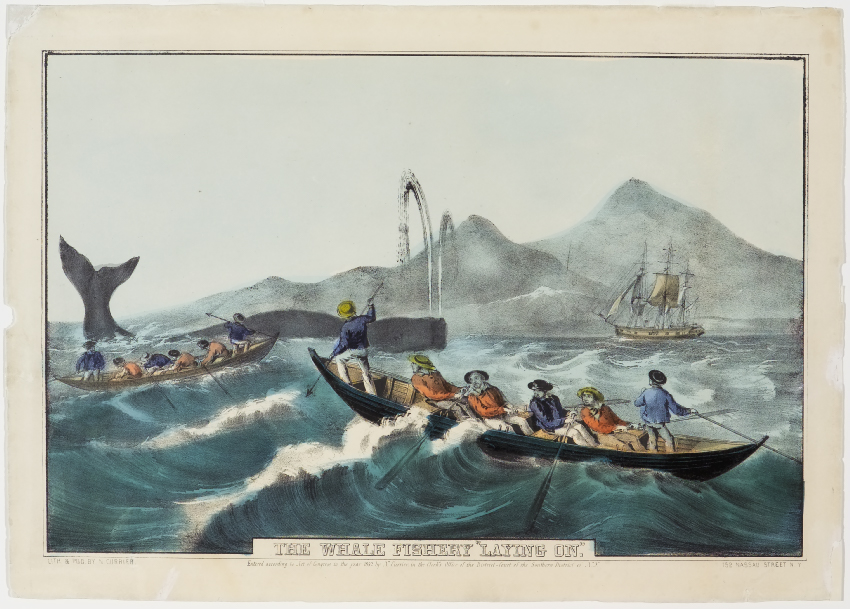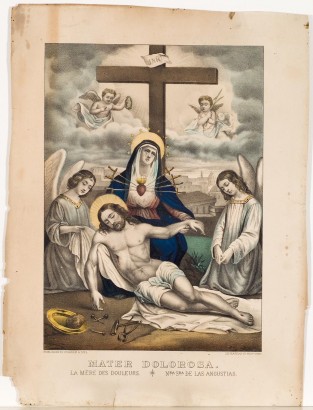Ship off to right two row boats filled with men rowing. One large whale to left background. Men at front of boats holding harpoons.
Until 1860, whale oil, used to light lamps and make candles, was the major source of artificial light in the United States. Look-outs stationed on beaches announced when a whale was spotted and crews immediately launched boats to try to capture the animal. In 1851, Herman Melville published Moby-Dick, the story of a sea captain’s obsession with a white whale. Responding to the public’s fascination with whaling, Nathaniel Currier published his first whaling print the next year. The firm printed at least 15 lithographs on whaling, several of them based on watercolors done after paintings by the French marine artist Louis Garneray (1783-1857), who had visited America early in the 19th century. This print, although not credited to the artist, is based on Garneray’s painting of the same name and shows the pursuit of a sperm whale, one of the largest and fiercest of the whales. The large mountains, which echo the shape of the whale’s tail, and the rolling waves, add to the drama of the scene.




